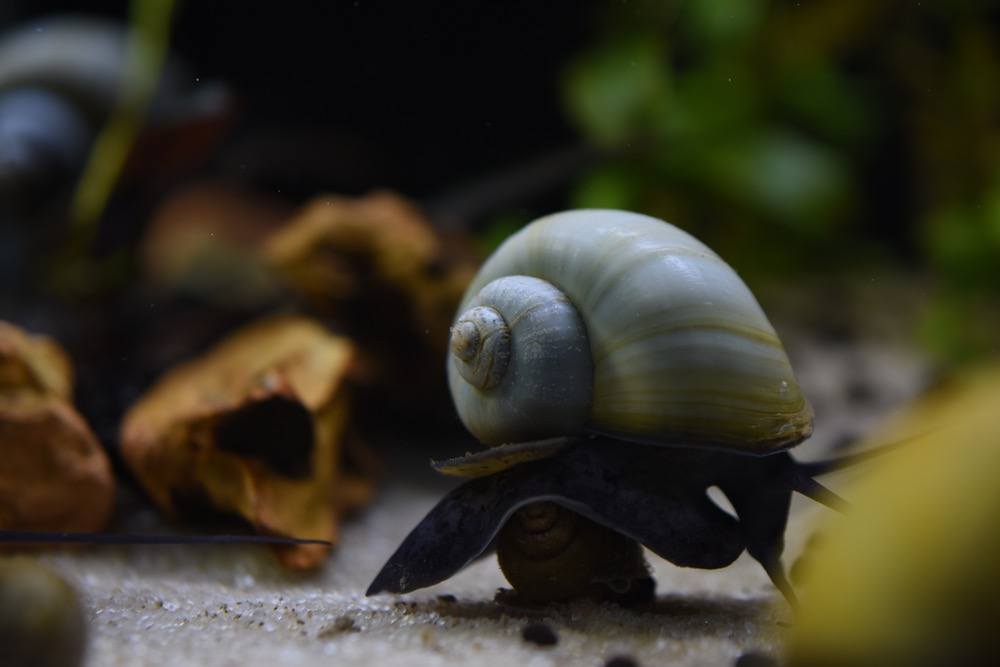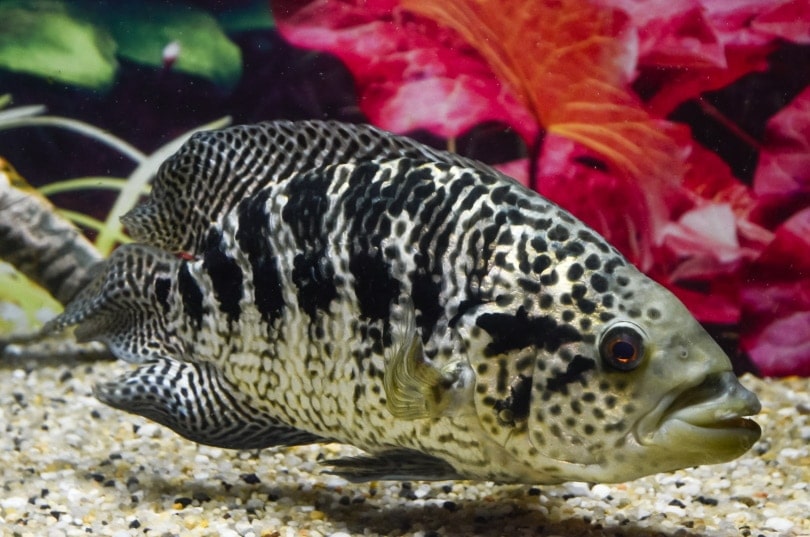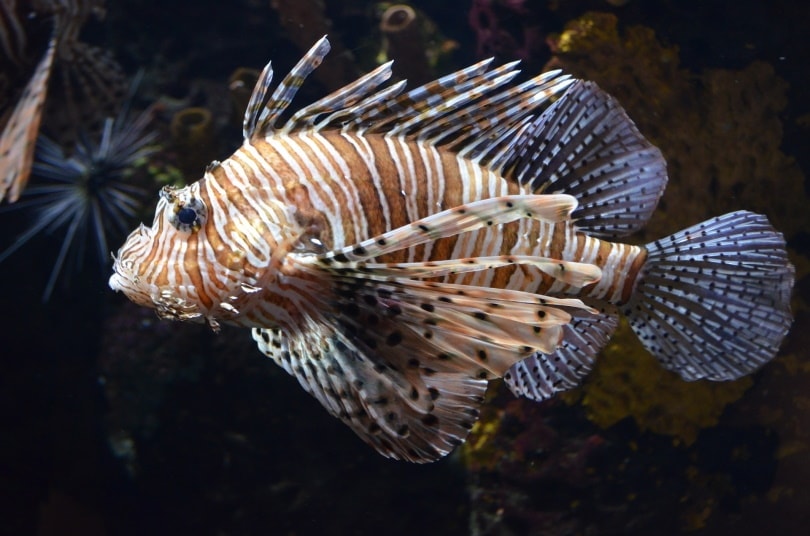8 Aquarium Fish That Give Live Birth (Livebearers)

Updated on
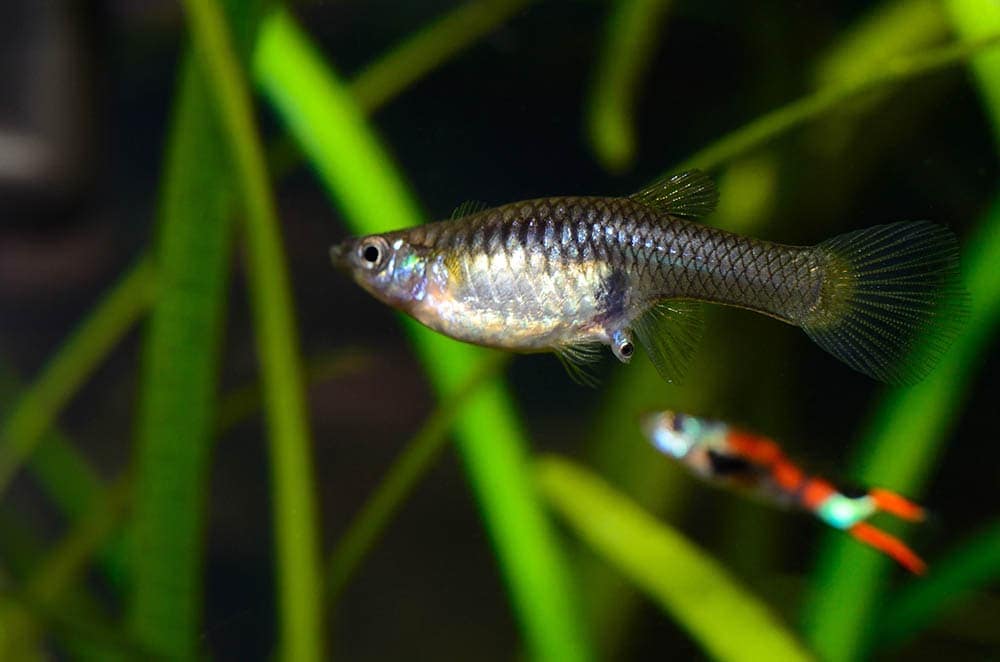
Livebearers are fish that don’t lay eggs, but rather incubate the eggs inside their bodies and give birth to live, free-swimming young. Livebearer babies, or fry, usually enter the world bigger and are better able to care for themselves than the fry of egg-layers. An advantage for aquarists is that the fry are also easier to care for and protect, making livebearers a popular choice for novice fish owners.
Sometimes, if you bring home a female livebearer, she’s already been impregnated in the tank that she shared with males, so you can have fry even if you don’t own any male fish. Let’s take a look at a few aquarium livebearers.
The 8 Aquarium Fish That Give Live Birth
1. Guppies
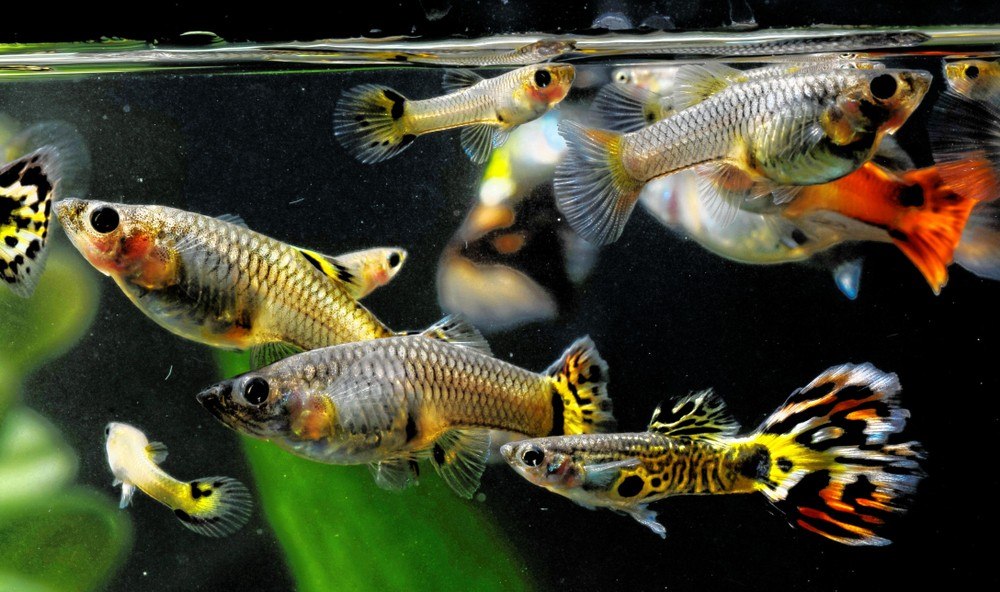
Guppies were discovered in 1866 by researcher Robert John Lechmere Guppy. That’s right, these fish are named after a person! Guppies are native to South American waters, and therefore, a heater is often necessary to keep their water around 75 degrees. Aside from that, the Guppy is an easy fish to keep. They’re friendly with other fish, they eat just about anything that they’re given (although brine shrimp is a favorite), and they come in a wide range of colors. They are known as the Rainbow Fish because of this variety. They’re also known as the Millions Fish due to the speed at which they breed.
Female Guppies can have between 5–30 fry every month. Sometimes, if you can watch closely, you can see the eyes of the fry through the mother’s abdominal skin because it’s so translucent.
2. Endler’s Livebearer
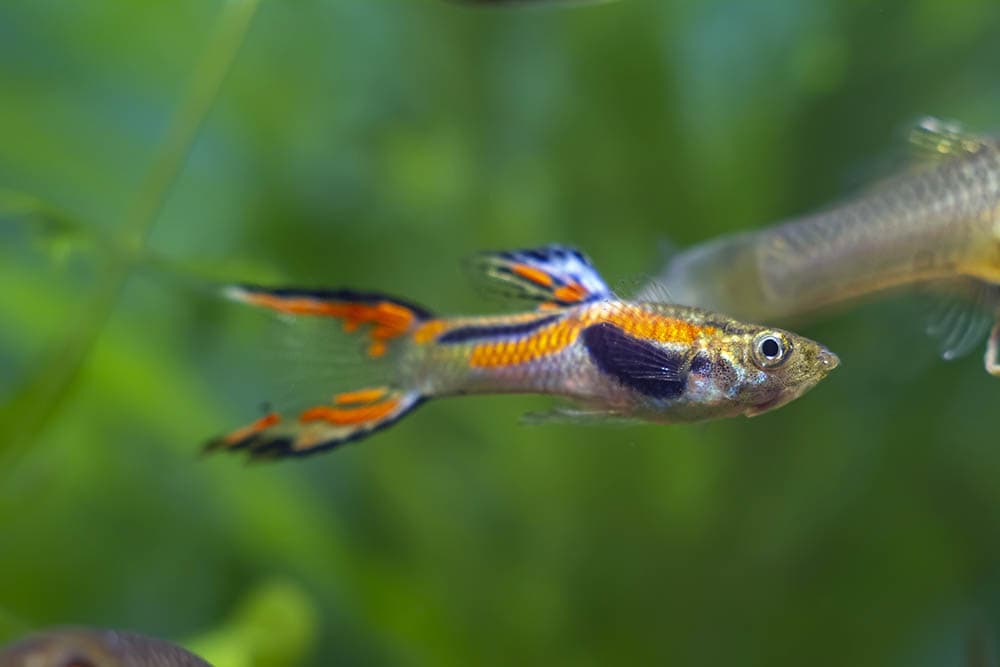
The Endler’s Livebearer is just about the same size and shape as the Guppy. Their distinguishing characteristic is their bright coloring. Neon and metallic greens, blues, yellows, reds, oranges, and more cover this beautiful little fish. Sometimes, their patterns can make it appear that they were splashed with colors. These fish are small and can’t defend themselves, so they need to share a tank with similarly-sized, docile fish. An ideal tank mate for this fish should not be big enough to eat it. A common tank mate of the Endler’s Livebearer is the Guppy, and the two will often breed with each other. If you’ve bred Guppies, the process is the same.
Keeping more females than males will enable the females to get a break and not be impregnated repeatedly. Frequent birthing will take a toll on the females’ bodies and shorten their lifespans. These fish don’t have parental instincts and will eat the fry if they can, so it’s best to move the adults to a separate tank once the fry are born.
3. Mosquitofish
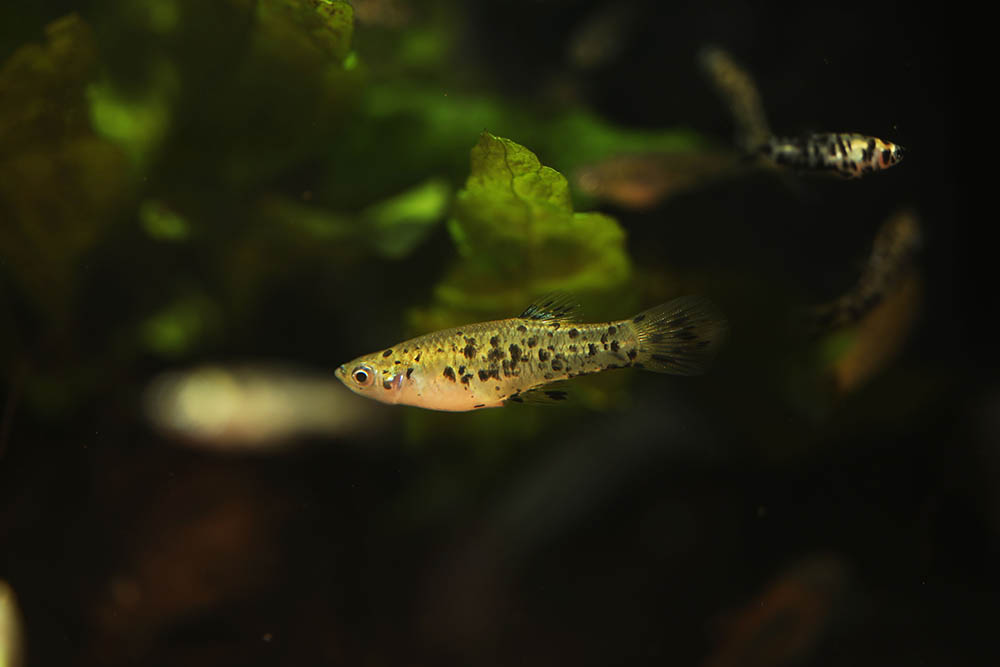
The Mosquitofish is native to North America in the Mississippi River. In captivity, these small fish are easy to care for due to their hardiness and ability to adapt to different environments. While this fish is sometimes kept in aquariums, their practical use gave them their name. Mosquitofish eat mosquito larvae in water. They’re used to help control the mosquito population in residential areas. Fountains and ponds usually include Mosquitofish to inhibit mosquito breeding. The San Diego County Vector Control Program actually offers Mosquitofish to residents at no charge so they can help control the mosquito problem.
If you’re keeping Mosquitofish in aquariums, it’s important to do so at a rate of one male to every three females. While pregnant, the female can choose when to give birth, and if she senses that there are any nearby threats, she can halt the process. She also considers male Mosquitofish to be a threat. If you have a pregnant female, she should be removed from the tank and separated from any males. Then, once she delivers, she should be removed from the babies, or else she may eat them.
4. Platies
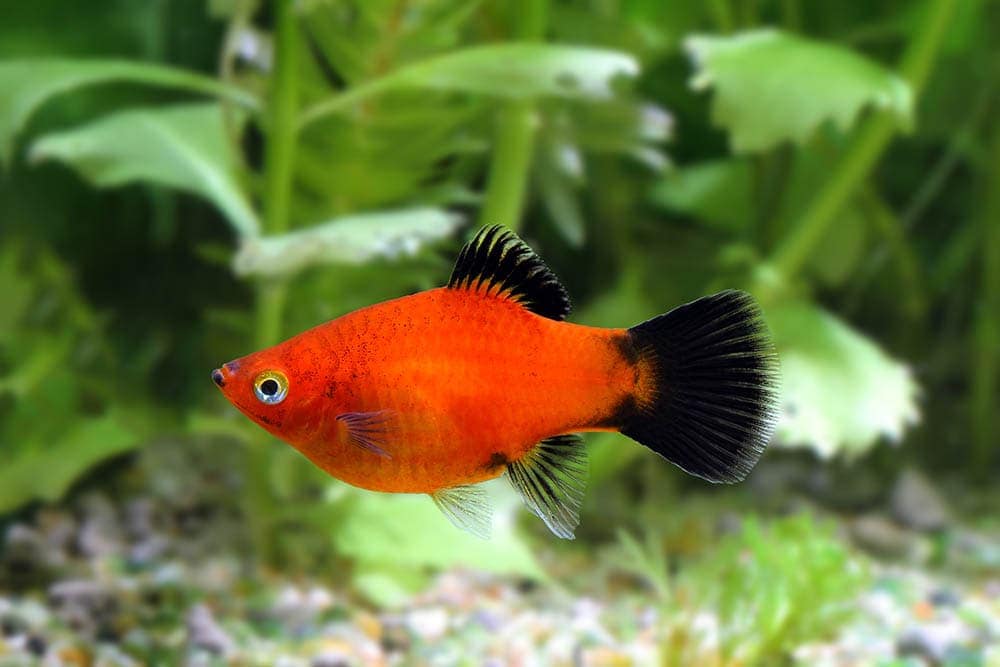
Platies were introduced in 1907 and have been a popular aquarium choice ever since. These fish are happiest when kept in a small group together. Always keep the fish tank covered if you have Platies! They can jump right out of the water. Platies are small fish with fan-shaped tails and come in many different colors. They breed quickly and often, so if you have a small group of Platies, expect that group to quickly grow bigger. More females than males are recommended because females can exhaust themselves trying to swim away from the males chasing them.
Females are usually larger and paler in color than males, so that’s a good way to tell them apart when choosing them for your aquarium. When they’re pregnant, females will start to show a black mark on their abdomens called a Gravid Spot. These fish eat their fry, so if you aren’t going to remove them from the tank once the female gives birth, make sure there are plenty of plants, caves, and other hiding places for the fry to take cover.
5. Swordtails
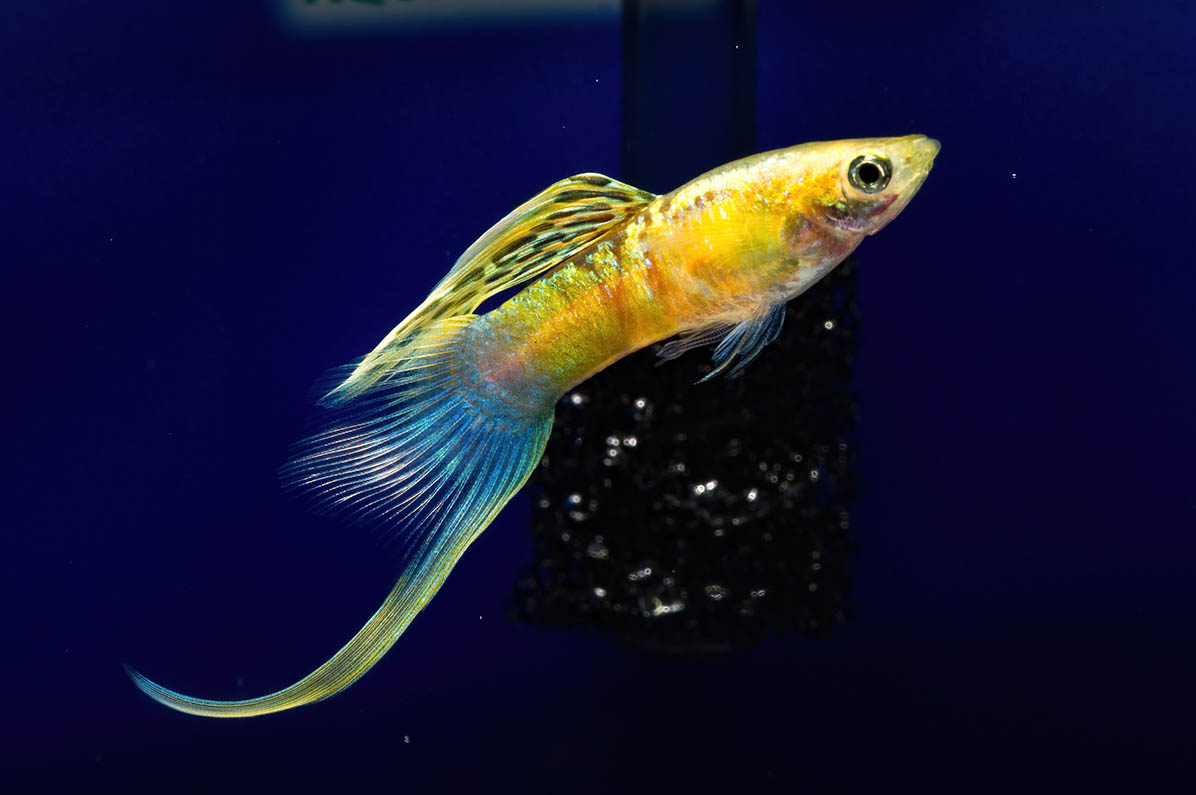
The Swordtail is named after the male fish’s appearance. The caudal fin on the male is elongated and trails behind the fish, resembling a sword. This fin can be as long as the fish’s body. Females lack this characteristic, so finding a breeding pair or ensuring that you don’t get one should be easy. This hassle-free fish is a favorite among beginners because they don’t require a great deal of particular care in order to thrive. Have clean water between 65–82 degrees, a few plants for hiding, and maybe a piece of driftwood, and the Swordtail can be happy for life, which is around 3–5 years. When females’ abdomens swell, you’ll know that they are incubating eggs.
It’s best to put her in a tank by herself until she gives birth and then remove her immediately before she eats the fry. Once the fry are born, they can survive on powdered fish food until they get big enough to start enjoying other foods, like frozen brine shrimp, freeze-dried bloodworms, and even live food.
6. Mollies
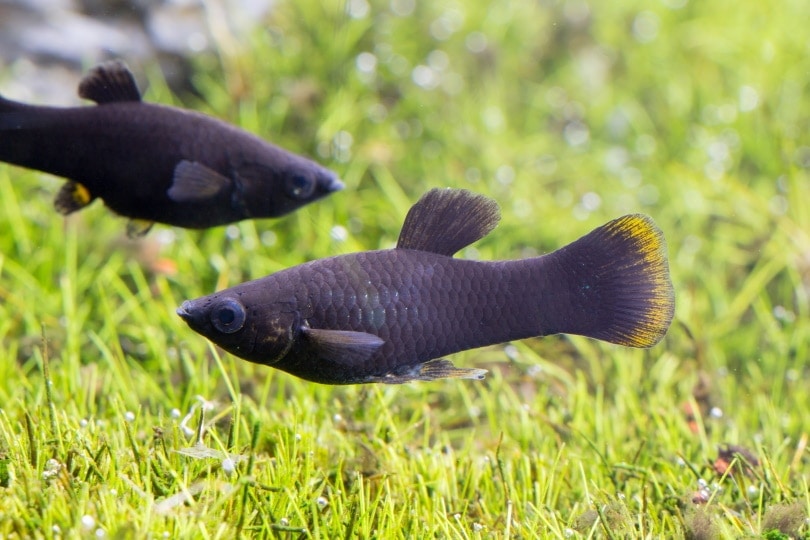
Various colors and markings exist for this fish, but the solid black Molly is common. The skin looks almost like velvet and has a soft appearance. All the species of Mollies have been bred together over the years, and this fish will also breed with Guppies. Males have fins that resemble sails and can grow 5 inches long. Mollies do well with tank mates of similar size and temperament. Female Mollies can give birth to 100 fry at once. It’s best to remove the adults once the fry arrive because Mollies will eat their babies.
You’ll know that the Molly is pregnant when her abdomen swells. She can be moved to her own tank then and returned to the community tank once she delivers. Don’t forget about separating her from her fry. Her maternal instinct isn’t well developed and she will view her fry as food, so separating them is best to give the fry a chance to survive.
 Male Livebearers
Male Livebearers
Pipefish and Seahorses are also livebearers and members of the same family, Syngnathidae. The difference between these and other livebearers is that the male Pipefish and Seahorses are the ones that carry the eggs and give birth.
7. Pipefish
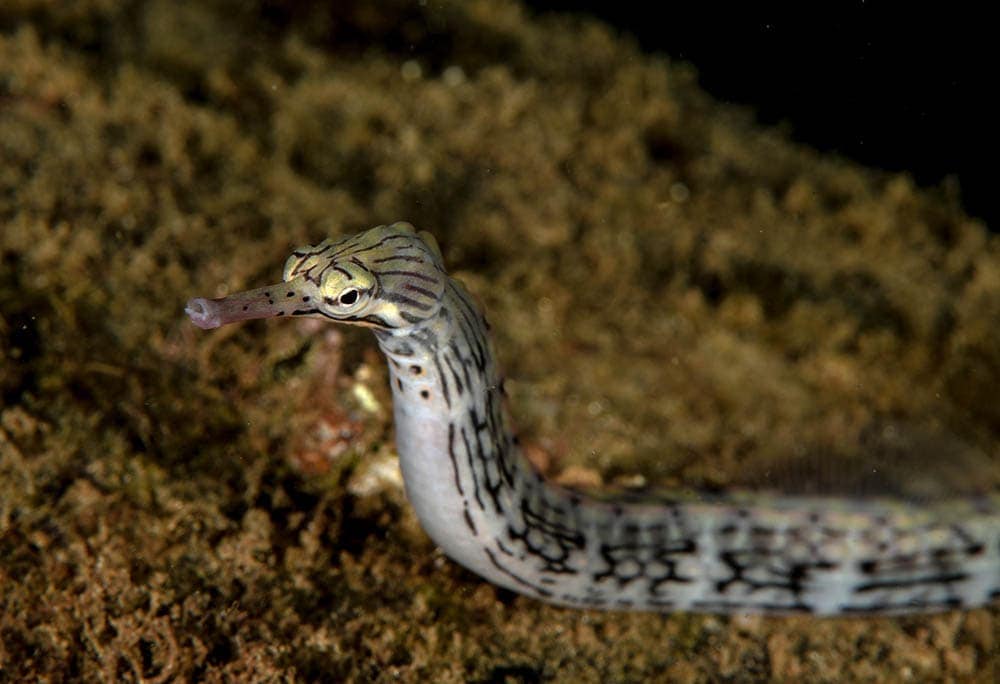
Pipefish have similar heads, noses, and mouths to Seahorses but their bodies are long and slender. This enables them to hide in plants and camouflage to avoid predators. Pipefish come in bright colors, and people enjoy them in their saltwater aquariums because of their beauty. They usually aren’t that good at seeing or finding food and can’t compete for it well with other fish. Pipefish don’t have stomachs and can’t store food, so they must be fed often and fed well. This makes some people think that they’re difficult to keep. The best tank mates for these friends are other Pipefish or Seahorses. Female Pipefish will lay their eggs in the pouch of the males. It resembles the pouch of a kangaroo and is called a brood pouch.
The males then carry the eggs until they hatch, with the pouch providing all the nutrients that the embryos need. The Pipefish parents will also eat the fry, which are just about as wide as a thread. When born, the fry fall to the bottom of the tank and should be separated from their parents to avoid any unpleasantness.
8. Seahorses

Seahorses are unique and stunning little creatures that have long snouts, wide bellies, and tails that can curl and wrap around plants and other items to serve as an anchor for them. They spend most of their time eating because their stomachs empty quickly. They suck their food in through their mouths like a vacuum. They lack scales and instead, have hard plates on their bodies that assist them when they’re swimming. Even so, they’re not great swimmers and like to hold onto objects while they rest. Seahorses, like Pipefish, have brood pouches where the female Seahorse will deposit her eggs. The male will fertilize and incubate them. When the fry are born, the male will twist and bend back and forth until they all pop out of the pouch.
Depending on the species of Seahorse, the male can carry between 5–2,000 eggs in his pouch at one time. It only takes a few weeks for Seahorse fry to be born, and then they are left completely to themselves. This could be why Seahorses can have so many fry. Only a few will make it to adulthood, having to protect themselves and find food on their own.
Conclusion
Livebearers are fascinating fish that are surprisingly easy to care for. If you’re looking to add these fish to your existing aquariums, it’s best to make sure they will get along with the fish that you already have. Fish of similar sizes and temperaments are the best tank mates. If you’re new to fishkeeping, livebearers make good first-time fish because of their hardiness and simplicity. Pipefish and Seahorses require a little more care, but you can find success with any fish as long as you need their needs.
See Also:
- 10 Great Tank Mates for Platy Fish (With Pictures)
- 10 Great Tank Mates for Molly Fish: Compatibility Guide 2023
Featured Image Credit: Lutsenko_Oleksandr, Shutterstock

 Male Livebearers
Male Livebearers